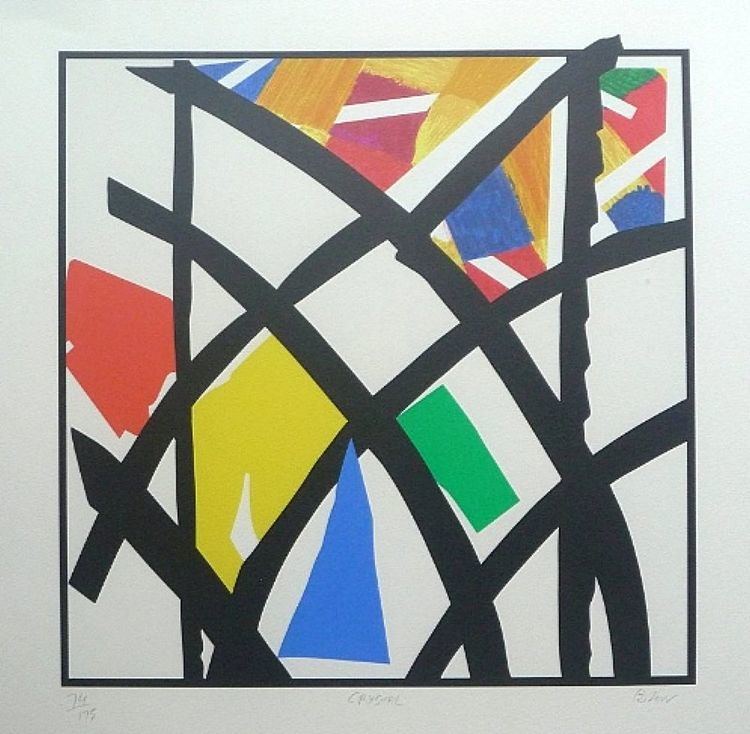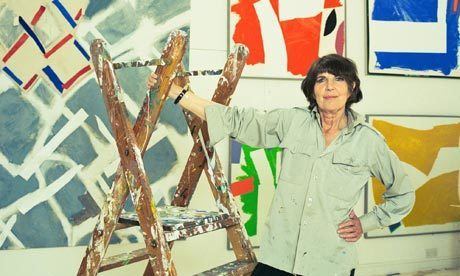Name Sandra Blow | Books Sandra Blow, RA. | |
 | ||
Education Central Saint Martins, Royal Academy of Arts | ||
Sandra blow a view of her working in the studio on a day to day basis
Sandra Betty Blow (14 September 1925 – 22 August 2006) was an English abstract painter. Born in London, she suffered scarlet fever as a child, spending weekends and holidays at her grandparents' fruit farm. There she spent time painting, before enrolling at Saint Martin's School of Art in 1941. In 1947, she travelled to Italy to study art, enrolling in Accademia di Belle Arti, where she met Alberto Burri, her partner for a few years.
Contents
- Sandra blow a view of her working in the studio on a day to day basis
- Sandra blow s studio
- Early life
- Artwork
- Later life
- References

Blow and Burri travelled Italy before working together in Paris, and Burri was a significant influence on Blow, teaching her to work in different materials and inspiring a passion for art.
Sandra blow s studio
Early life

Sandra Betty Blow was born on 14 September 1925 in Newington, London. She came from a Jewish family; her father, Jacob, who was a fruit wholesaler, and her mother had three children, Sandra was the second. During her childhood, Blow spent weekends and holidays in Kent at her grandparents' fruit farm.

In 1934, Blow suffered with scarlet fever, followed by rheumatic fever, from which her heart never fully recovered. After attending a local primary school, Blow was educated at a private girls school. At the age of fourteen, Blow was evacuated with her mother and two brothers to Paddock Wood in Kent, near her grandparents' fruit farm, where she spent her time reading, drawing and painting.
Blow enrolled at Saint Martin's School of Art in 1941, where she studied until 1946 under teachers including Ruskin Spear. During this time she joined the artists' social scene, meeting people such as Lucian Freud, John Minton and Francis Bacon. She spent a short period in 1947 at the Royal Academy schools, but found the teaching dull, so instead travelled to Italy to study classic art. There she was inspired by Nicolas Carone to enrol at Accademia di Belle Arti in Rome. There she met Alberto Burri, with whom she began a relationship and travelled Italy during 1948.
Blow and Burri worked together in Paris during 1949, but the spark had left their relationship so they split on friendly terms, with the pair creating works in response to the other throughout the 1950s and 1960s. Blow returned to London in 1950, where she produced works regularly. In 1960, she started teaching painting at Royal College of Art, where she remained until 1975, whilst also painting in her studio in Chelsea, London. She was elected to the Royal Academy in 1978.
Artwork
After her structured training at Saint Martin's, Blow was influenced by Nicolas Carone and his approach to colour and space. He in turn had been influenced by Hans Hofmann. Blow was also influenced by Alberto Burri, who was progressing towards abstract art informel, using materials such as sacking. Blow and Burri started a relationship, and travelled together throughout Italy during 1948, influencing each other's styles. It was through him that she started to use "poor" non-art materials, as seen in her painting Space And Matter in which she used liquid cement plus chaff and charcoal,} but his lasting influence was in his commitment to art and his interest in the different textures of the world.
Blow's work in the abstract art is considered pioneering, she would regularly use collage effects in her paintings and sometimes dyed her canvas with tea to produce different effects. She often used larger canvases and in her early career was known for her focus on "abstract form, light, space, texture and rhythm" in her work. One well-known piece by Blow illustrating her improvisatory approach to the use of materials, Space And Matter, is a painting of oil on board plus other experimental materials, creating the impression of wood and tar as well as flame and sea spray. Her work was sold to the Museum of Modern Art and the Tate Gallery and was exhibited at the 1958 Venice Biennale, the 1960 Guggenheim International Award (which she won), the 1961 Liverpool John Moores University exhibition and the Victoria and Albert Museum. In 1995, she completed her "only large scale experimentation with glass", an illuminated glass screen named Flight Structure, which was installed in Terminal 3 of Heathrow Airport. This was installed by the airside entrance and the artist styled the work to convey the transition from security to flight. It has now been moved to the airport's head office in the Compass Centre.
Later life
Blow lived in a flat in South Kensington, London, since the 1960s but was forced to move due to rising rents. In 1994, she moved to St Ives, Cornwall, and there have been retrospectives of her work at the Royal Academy and Tate St Ives. Blow never had children, which had been a purposeful decision in her twenties, but she later regretted it. Blow died at the Royal Cornwall Hospital after a heart valve replacement operation resulted in a cerebral haemorrhage.
